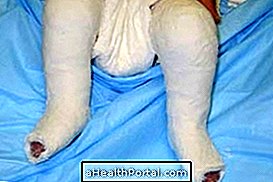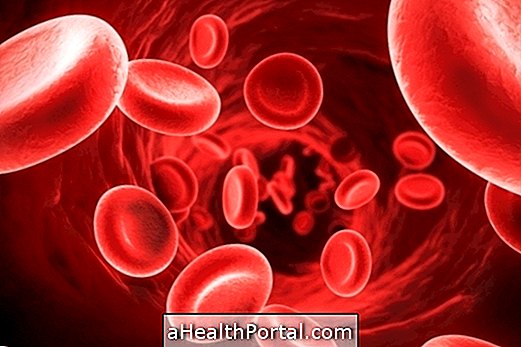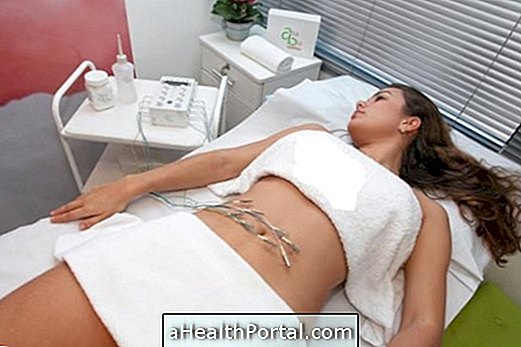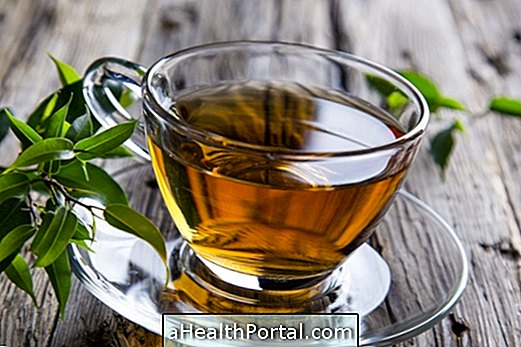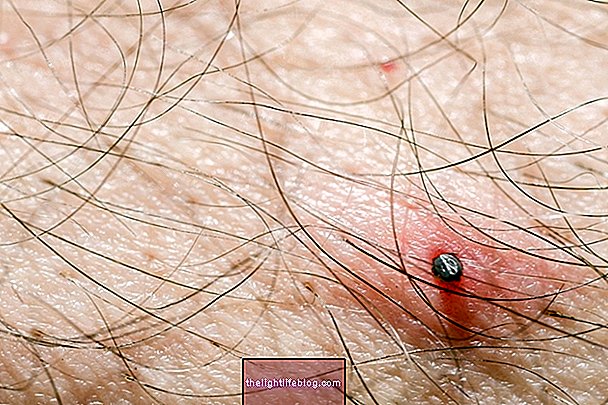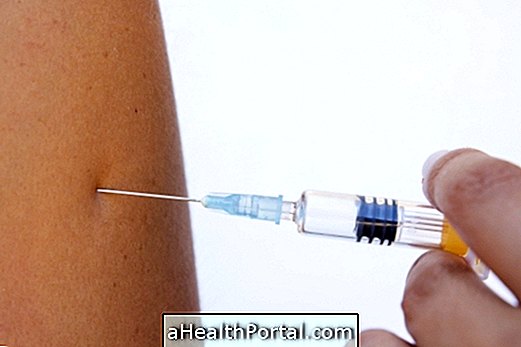Knee pain should pass completely in 3 days, but if it still bothers a lot and limits movement, it is important to consult an orthopedist to examine the knee and treat the cause of the pain correctly.
However, it is possible to relieve knee pain while waiting for the consultation with the following steps:
Tip 1: Put Ice
Apply cold compresses for 3 minutes to reduce swelling shortly after you have bumped your knee and for the next 2 days. Ice can also be used to reduce swelling in the case of rheumatism, for example.
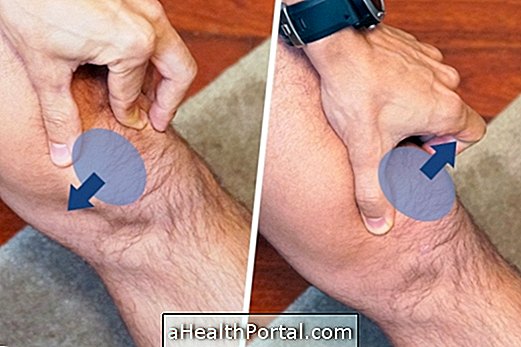
Tip 2: Get a massage
Massage the knee to keep it from stiff by moving the round knee from side to side for 3 to 5 minutes, supporting the foot on the floor or on a chair, as the picture shows.
Tip 3: Put on a warm compress
Apply warm compress to warm cloth or a wet gauze in warm chamomile tea on the knee that hurts for 5 to 10 minutes, 2 to 3 times a day, to relieve pain when the knee is no longer swollen. This should never be done when the knee is swollen, such as after a fall or bump as it can worsen swelling. Ask your questions about how and when to use hot or cold compresses.
Tip 4: Postural drainage
Lying on the bed or couch, lift the leg from the aching knee, placing a cushion under the foot to improve knee circulation and decrease pain.
Tip 5: Do stretching
Gently stretch the leg of the aching knee, bending the leg back without pushing too hard, leaning against a chair to keep from falling. See other exercises in: Joint Spill.
Knee pain usually arises because of an injury caused by a fall in the sidewalk, for example, or due to arthritis, arthritis or gout, which are chronic diseases that usually cause the knee to ache. However, localized pain in the knee may have other causes, see more details on: Knee pain.
See also in the following video some natural painkillers that you can use:

When to go to the doctor
It is recommended to go to the orthopedist when knee pain does not improve in 3 days with these tips or worse, so the doctor can examine the knee and find out the cause by using diagnostic tests such as x-ray or MRI.
The treatment to relieve knee pain can be done with physiotherapy and with analgesic and anti-inflammatory drugs prescribed by the doctor such as Paracetamol, Ibuprofen, Diclofenac or Coltrax, for example.
Here's how to reduce the pain that comes after running: How to treat knee pain after a run.

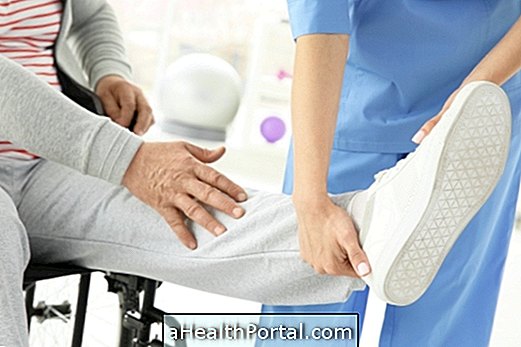

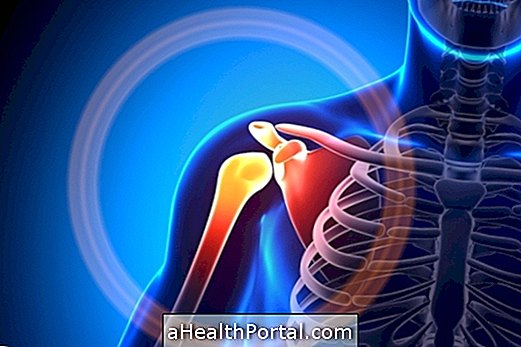

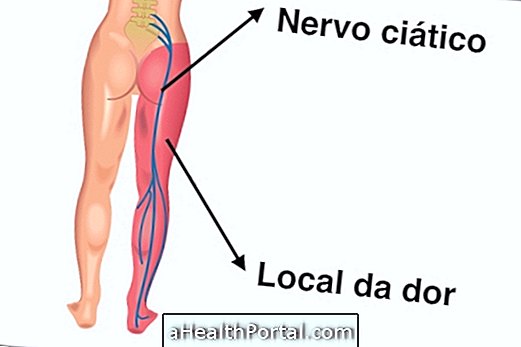

-o-que--sintomas-e-tratamento.jpg)

